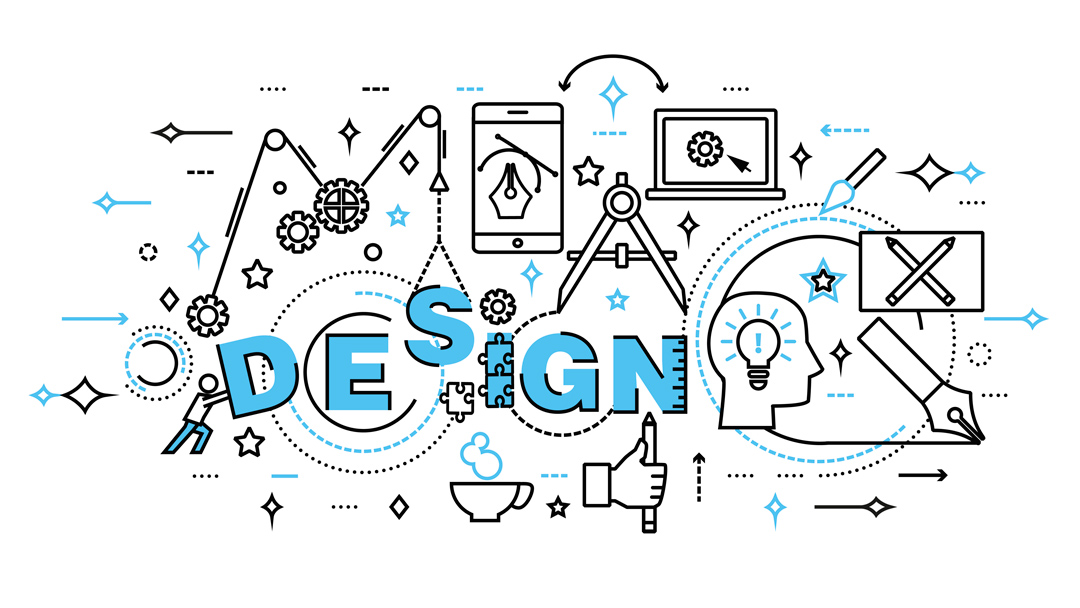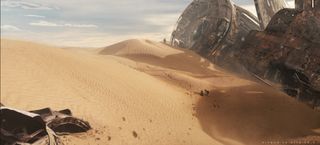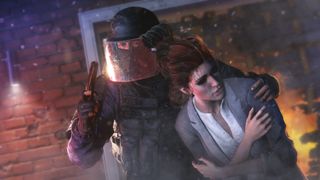
The design industry is a big place. And it’s getting bigger. Your options to specialise in a specific disciplines, including illustration and 3d art, are increasing, and with this in mind we’ve met with the leading artists, art directors and animators in the industry to discover what it takes to make it in different areas, from illustration and games to arch-vis and VR. They’ll reveal what an employer looks for in a new artist, the software you should learn and the skills needed to succeed.
Working in illustration

If you want to get into games and film, but want to specialise in concept design, then freelance concept artist, Arnaud Valette, whose credits include Guardians of the Galaxy and Maleficent, has some advice: “It’s business, and you have to sell ideas with your skills.” So if you create a creature design, then you should show the full work and position the animal in an environment. Portfolio success is in the detail: “Do portrait studies with eye variations, textures variations, or place your creature in different lighting conditions”.
For Valette, it’s key to show you can get the fundamentals right, anatomy, lighting, perspective and colour theory. While showing a knowledge of software is good, the most important thing for concept portfolios is to demonstrate your good eye for design. “It can take years to train your eye. Having a good taste for colours or shapes takes practice,” he says. “Tools are just tools that you use to show your visions. These days, things are pretty fast- moving, and software is constantly evolving, so you have to evolve with it.”
When your portfolio is done, take it online, but keep it up to date: “Your portfolio represents who you are, so take good care of it!” says Valette. “Always remember it’s better to have five killer artworks than 20 artworks of an average quality. Look for the quality; push your limits!”
Working in arch-viz

Other sectors have even more specific criteria for success, for example, artists wanting to get into arch-viz will need to show knowledge of cutting-edge technology, such as VR and 3D printing in order to get ahead. Also, teamwork and being able to adapt new ideas into your art will help you stand out. “Architecture is evolving with digital technologies, opening a new spectrum
of collaborative situations,” says architect Alberto Villanueva Galindo, “and we need to understand how to work in multidisciplinary teams. Don’t be afraid to collaborate with engineers, biotechnologists, and so on. Your ability to integrate different disciplines will prepare you for the best.”
Key software for arch-viz CG artists include Rhino, Grasshopper, Maya, and Revit; but having said that, Galindo prefers to use AutoCAD, Illustrator and 3ds Max with V-Ray. “It is not important which software you use, just your ability to generate the content,“ he says.
What is important is the person’s ability to communicate; to create a story that talks about themselves
When it comes to looking at portfolios, Galindo scrutinises the content and the way the portfolio is presented: “What is important is the person’s ability to communicate; to create a story that talks about themselves. The candidates need to have a high ability to select the best pieces of their work to demonstrate who they are. The way a candidate establishes the composition of the information presented reflects how they prioritise information and tells me about their graphic skills.”
Get the Creative Bloq Newsletter
Daily design news, reviews, how-tos and more, as picked by the editors.
Now all you have to do is make sure that you tailor your portfolio to get land the job you’ve always dreamed of.
Working in virtual reality

Solomon Rogers, founder of creative studio Rewind, specialises in VR, which he says has a similar pipeline to games, with modelling and animation in 3ds Max or Maya, sculpting and texturing in ZBrush and Mudbox or Mari, and everything is brought together in Unreal Engine or Unity. So, those are your software touchstones, but what about portfolios?
“A good portfolio of a 3D artist would include a great showreel of game-ready assets, turntables, wireframes and examples of those assets in-engine; UE4, Unity or Marmoset,” says Rogers. “A good portfolio would include a showreel of 360 video work, with examples of before and after postproduction stitching, VFX breakdowns of tricky fixes, tracking and examples of edit, grade and motion graphics.”
Working in games

When it comes to working in the video- games arena, Ubisoft’s senior animation art director Scott Mitchell says: “The industry as a whole is pretty rock ’n’ roll, [and has become a very competitive place, and so students need to compete] right out of the gate”. This means honing your portfolio, experience and attitude to life in a cut- throat environment.
“First and foremost I’m looking for a sense of appeal and technique,“ Mitchell reveals. “Has the artist made the right choices visually? There’s a lot of debate over traditional art rules and how they were meant to be broken. I’ve seen this interpreted in multiple ways, but what it comes down to is that you need to know the rules before you can break them.”
A lack of good technique will show through so Mitchell looks for solid technique, the use of visual language to strengthen composition, and specifically in the case of animation, a clear knowledge of the principles of animation.
After the artwork is complete comes integration and all the creative problem- solving that goes along with it.
“In games, it is essential that a student shows they have successfully rendered their work interactively, since it’s highly likely they will be faced with this challenge in their first week on the job,” explains Mitchell. “There are a few accessible tools students should learn to use to integrate their work into a game engine. The Unity and Unreal engines are two of the most common game engines used in the industry. If a playable demo is available, that’s even better.”
When it comes to demo reels, Mitchell is clear: don’t put every piece of student work into your reel and don’t use the same demo reel from school: “I find it’s important to tailor a demo reel to the client and the position they are hiring for, modelling, rigging, animation, and so on. In the end, the strongest work will stick out in a demo, and anything else might work against you. I’m of the philosophy that less is more.”
I find it’s important to tailor a demo reel to the client and the position they are hiring for
Mitchell turns to schools who encourage students to work together and share the work of their fellow classmates when hiring, “I like to see collaborative projects in demo reels because it shows to what level a person could be capable of working in a team environment. Depending on the size of the company you will work for, responsibilities may or may not cross into other disciplines. In smaller studios, there’s a limited number of artists, and technical talents are preferred. The art tends to be treated as an asset and thus won’t be taken as seriously.”
When you get to the interview, Mitchell likes to ask the classic question: ‘Where do you see yourself in five years’, and with good reason: “Anyone new to the industry isn’t just trying to compete against others with little to no experience. They are up against junior and intermediate staff that already have some experience and who most likely already know what direction they want to take. The worst response I get to this question is, “Oh I don’t know. I’m just looking to get my foot in the door and then we will see from there”. What I’m looking for here is a sense of commitment and focus on behalf of a potential future hire.”
This article was originally published in 3D World magazine issue 210. Buy it here.

Thank you for reading 5 articles this month* Join now for unlimited access
Enjoy your first month for just £1 / $1 / €1
*Read 5 free articles per month without a subscription

Join now for unlimited access
Try first month for just £1 / $1 / €1
Ian Dean is Editor, Digital Arts & 3D at Creative Bloq, and the former editor of many leading magazines. These titles included ImagineFX, 3D World and video game titles Play and Official PlayStation Magazine. Ian launched Xbox magazine X360 and edited PlayStation World. For Creative Bloq, Ian combines his experiences to bring the latest news on digital art, VFX and video games and tech, and in his spare time he doodles in Procreate, ArtRage, and Rebelle while finding time to play Xbox and PS5.
